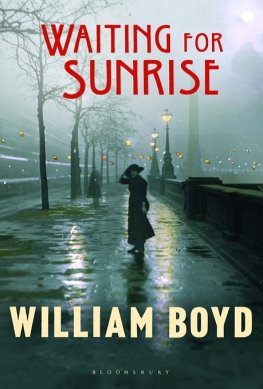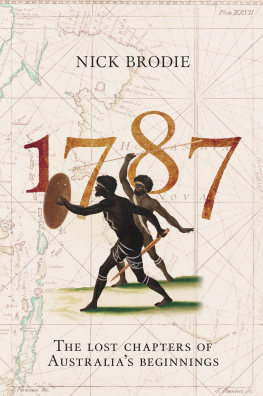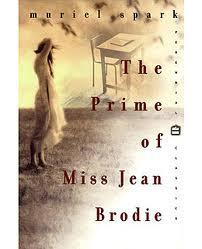ALSO BY WILLIAM BOYD
NOVELS
A Good Man in Africa
An Ice-Cream War
Stars and Bars
The New Confessions
Brazzaville Beach
The Blue Afternoon
Armadillo
Nat Tate: An American Artist 19281960
Any Human Heart
Restless
Ordinary Thunderstorms
Waiting for Sunrise
Solo
Sweet Caress: The Many Lives of Amory Clay
SHORT STORY COLLECTIONS
On the Yankee Station
The Destiny of Nathalie X
Fascination
The Dream Lover
The Dreams of Bethany Mellmoth
PLAYS
School Ties
Six Parties
Longing
The Argument
NON-FICTION
Bamboo
THIS IS A BORZOI BOOK
PUBLISHED BY ALFRED A. KNOPF
Copyright 2018 by William Boyd
All rights reserved. Published in the United States by Alfred A. Knopf, a division of Penguin Random House LLC, New York, and in Canada by Random House of Canada, a division of Penguin Random House Canada Limited, Toronto. Originally published in hardcover in Great Britian by Viking, a division of Penguin Random House Ltd., London, in 2018.
www.aaknopf.com
Knopf, Borzoi Books, and the colophon are registered trademarks of Penguin Random House LLC.
Library of Congress Cataloging-in-Publication Data
Names: Boyd, William, [date]- author.
Title: Love is blind : a novel / William Boyd.
Description: First North American edition. | New York : Alfred A. Knopf, 2018.
Identifiers: LCCN 2018015401 (print) | LCCN 2018019292 (ebook) | ISBN 9780525655275 (ebook) | ISBN 9780525655268 (hardcover)
Classification: LCC PR 6052. O 9192 (ebook) | LCC PR 6052. O 9192 L 68 2018 (print) DDC 823/.914dc23
LC record available at https://lccn.loc.gov/2018015401
Ebook ISBN9780525655275
This is a work of fiction. Names, characters, places and incidents either are the product of the authors imagination or are used fictitiously. Any resemblance to actual persons, living or dead, events or locales is entirely coincidental.
Cover image: bifocal spectacles, ca. 1885. Dorling Kindersley / UIG / Bridgeman Images
Cover design by Megan Wilson
v5.3.2
ep
Contents
For Susan
During the last year of his life Anton [Chekhov] thought of writing another play. It was not quite clear in his mind, but he told me that the hero, a scientist, loves a woman who either does not love him or is unfaithful to him. The scientist goes to the Far North. He pictured the third act thus: a ship is icebound; the sky is ablaze with the Northern Lights. The scientist stands, a solitary figure, on the deck amidst the utter silence and grandeur of the night, and against the background of the Northern Lights he sees the shadow of the woman he loves.
Olga Knipper-Chekhova, The Last Years
Falling in love is the one illogical adventure, the one thing of which we are tempted to think as supernatural, in our trite and reasonable world. The effect is out of all proportion with the cause.
Robert Louis Stevenson, VirginibusPuerisque
PROLOGUE
Port Blair
Andaman Islands
Indian Empire
11 March 1906
Dear Amelia,
There was an attempt to escape from the jail last night and a small riot ensued. Most unusual. Three of the prisoners were killed but a number managed to flee. Consequently we have a twenty-four-hour curfew imposed on the town so here I am in my house at luncheon writing this long-overdue missive.
All is well, my leg is much better (Dr. Klein is very pleased, he says, though Im walking with a stickvery elegant) and the new tribe weve found is slowly becoming accommodating. Colonel Ticknell, the British superintendent here, is most helpful. Your every need, Miss Arbogast, is mine. Please dont hesitate, the merest trifle, etc., etc. And I dont hesitate (you know me). Transport, bearers, diplomatic postal facilitieseven a firearmhave been supplied. I think Col. Ticknell has a soft spot for me and he imagines diligent concern will win my heart. No harm in thinking, I suppose. You will call me a calculating minx, but needs must out here.
And, mirabile dictu, the advertisement I placed in the local newspaper and that I personally affixed to the wall in the post office has been answered. I have a new assistantfinally!
A policeman is knocking on the door. The curfew is over, I suspect. I will write again, later.
In the meantime, with my love as always, your sister,
Page
P.S. By the way my new assistant is a tall Scotchman, about thirty-five years old, called Brodie Moncur.
PART I
Edinburgh
1894
1
Brodie Moncur stood in the main window of Channon & Co. and looked out at the hurrying pedestrians, the cabs, carriages and labouring drays of George Street. It was raininga steady soft rain driven slant from time to time by the occasional fierce gust of windand, under the ponderous pewter light, the sooty facades of the buildings opposite had darkened with the water to a near-black. Like velvet, Brodie thought, or moleskin. He took off his spectacles and wiped the lenses clean on his handkerchief. Looking out of the window again, spectacle-less, he saw that rainy Edinburgh had now gone utterly aqueous. The buildings opposite were a cliff of black suede.
He replaced his spectacleshooking the wire sides behind his earsand the world returned to normal. He slipped his watch from his waistcoat pocket. Nearly nine oclockbetter start. He opened up the glossy new grand piano that was on the display dais, propping up the curved lid with its inlaid mirror (only for display purposeshis idea) the better to present the intricate machinerythe actioninside a Channon grand. He removed the fall from over the keys and undid the key-block screws. He checked that no hammers were up and then drew the whole action forward by the flange rail under the front. As it was a new piano it drew out perfectly. Already a passer-by had stopped and was peering in. Drawing out the action always compelled attention. Everyone had seen a grand piano with the lid up but having the action on display somehow altered every easy assumption. The piano no longer seemed familiar. Now all the moving parts were visible beyond the black and white keysthe hammers, the rockers, the jacks, the whippens, the dampersits innards were exposed like a clock with its back off or a railway engine dismantled in a repair shed. Mysteriesmusic, time, movementwere reduced to complex, elaborate mechanisms. People tended to be fascinated.
He untied his leather roll of tools, selected the tuning lever and pretended to tune the piano, tightening a few strings here and there, testing them and resetting them. The piano was perfectly tunedhe had tuned it himself when it had emerged, pristine, from the factory two weeks ago. He tuned F a modicum on the sharp side then knocked it inback into tunewith a few brisk taps on the key. He supported a hammer-head and needled-up the felt a little with his three-pronged voicing tool and returned it to its position. This pantomime of tuning a piano was meant to lure the customers in. He had suggested, at one of the rare staff meetings, that they should have someone actually playing the pianoan accomplished pianistas they did in showrooms in Germany, and as the Erard and Pleyel piano manufacturers had done in Paris in the 1830s and drawn huge crowds. It was hardly an innovationbut an impromptu recital in a shop window would surely be more enticing than listening to the mannered repetitions of a piano being tuned.





















